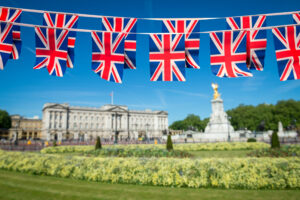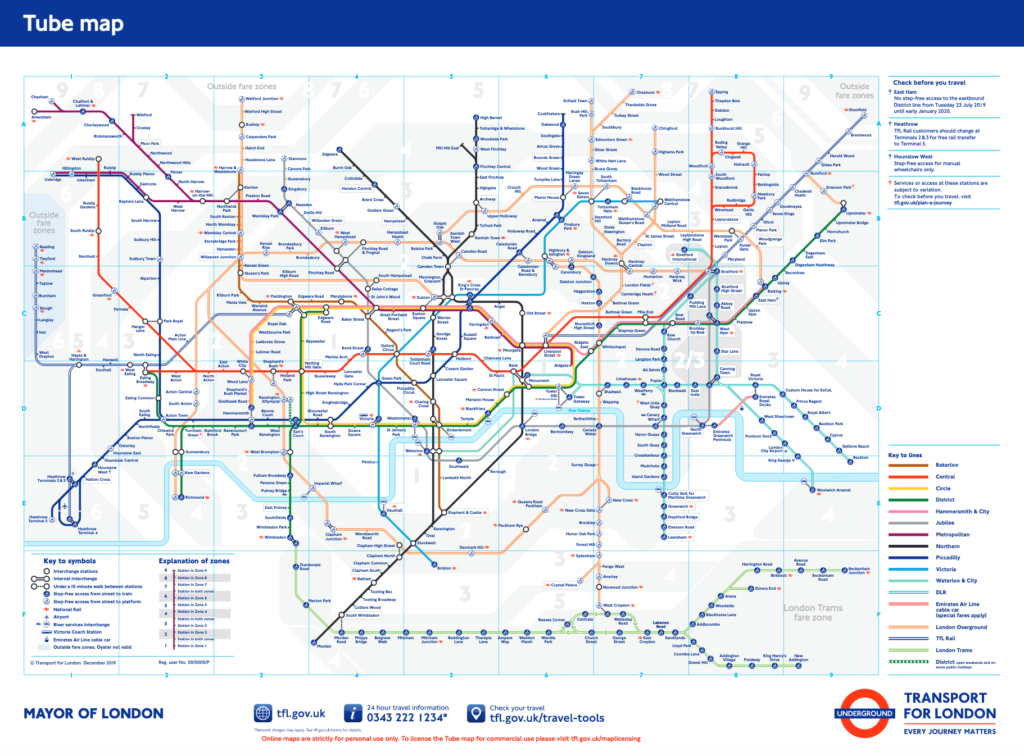As Herman Melville once said, “There are two places in the world where men can most effectively disappear – the city of London and the South Seas.” It’s easy to imagine being lost in the hordes of Picadilly Circus on a busy July afternoon, but are London’s city streets any less crowded when the weather cools? Not by much, though enough to bring down prices on hotel and airfare.
Look and you'll find pros and cons to every season in London. The way you rank them will depend entirely on your individual travel preferences. Consider the following when planning your visit to the UK capital.
Jump to Areas In This Guide:
- The Best Time of the Year to Visit London
- London Weather by Month
- Popular Events and Festivals
- When to Go to Avoid Crowds
- Flying Into London
- Getting Around London
- Things to Do
- Frequently Asked Questions
The Best Time of Year to Visit London
Spring and Summer:
As you might have guessed, the warmer months from May through September are the most popular times to visit London. As the temperatures swell, so do queues at popular attractions like Buckingham Palace, the Tower of London, and the National Gallery. Visitors can also expect to spend a lot more on flights and hotels than they would during other months. If you do prefer to visit London in the summer, you’d be wise to plan as early as possible to ensure a fair price on popular mid-range and budget properties.
Late Summer through Early Winter
The shoulder season from mid-September through mid-December is one of the better times to plan your visit to London. The later in fall you visit, the greater your odds of experiencing London’s famously wet weather. Consider it just another part of the local culture to be absorbed. Those who choose to visit during this time will find reasonably priced room rates and airfares, both of which typically decrease into fall.
Winter
If above all else your priority is keeping costs to an absolute minimum, January, February, and early March are ideal months for the budget traveler. Airlines and hotels tend to roll out their lowest prices in the post-holiday travel slump. Crowds at city attractions are also at their lowest, meaning little to no wait times. Winter weather is, of course, in full swing, but travelers from much of the U.S. may find London mild compared to back home.
Late Winter through mid-Spring
The shoulder season from mid-March through early May is another great time to visit London. Again, some may be put off by spring’s uptick in rain showers, though otherwise, the weather is mild and mostly cooperative. Deals on hotels and flights are easy to find with some exception in mid to late March.
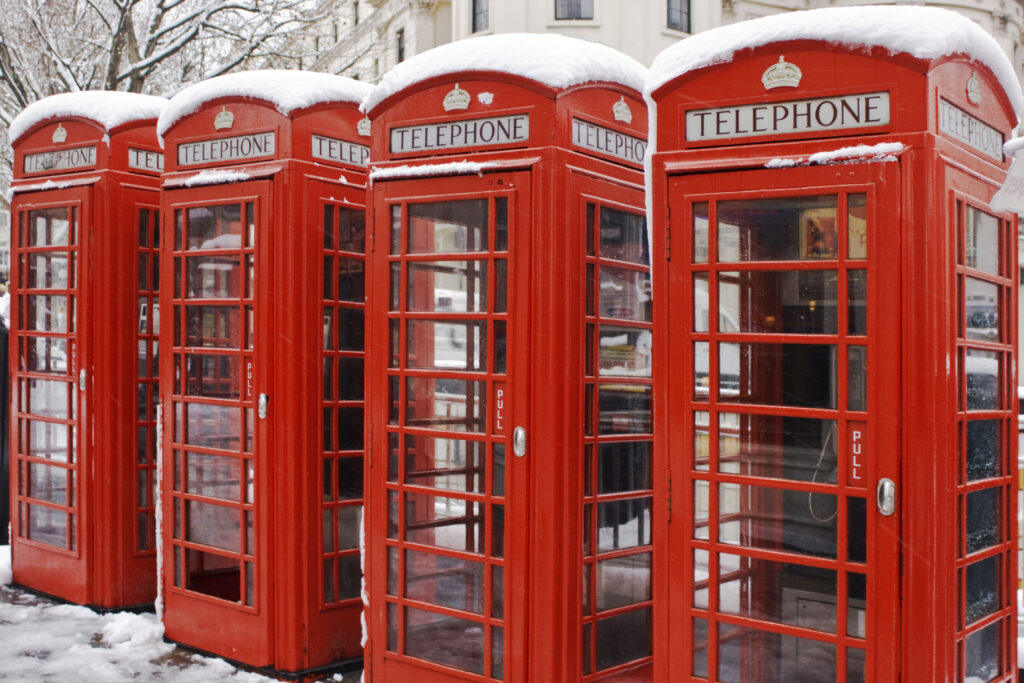
Avella / Shutterstock
London Weather by Month
London Weather in January
Many Americans may find January temperatures to be mild when compared to brutal winters of Midwest, Mid-Atlantic, and New England. The average high reaches 48°F with an average low of 40°F. Snow is rare, icy winter rain is more common than snow. Winds are at their strongest in January. Pack warm weatherproof jackets and boots, and a sturdy umbrella to protect you on those long London walks.
London Weather in February
February weather in London is moderately cold with an average high of 49°F and an average low of 40°F. London sees an average of 9 rain days in February, so keep your rain boots and umbrella at the ready.
London Weather in March
As winter transitions into spring, March weather in London can really run the gamut from cold and rainy to mild with a sliver of sun. That makes packing for March a bit of a challenge, but remember to dress in layers and bring a weatherproof pair of boots and a coat that won’t leave you soggy and cold. The average high in March climbs to 52°F with lows of around 42°F. March has an average of 9 days of rainfall.
London Weather in April
The spring chill and near-constant chance for showers mean visitors should keep their coats and umbrellas close in April. Temperatures rise to an average of 59°F, with a low of 45°F.
London Weather in May
By May, London spring is in full bloom. Brisk mornings give way to warmer afternoons, so light coats and layers are still a good idea. The average high is 65°F, with an average low of 51°F.
London Weather in June
June offers some of London’s best and most temperate weather. Rain falls an average of 8 days, which is one of the lowest of the year. Late nights and mornings can still feel a bit cool, so it’s a good idea to bring along a light jacket or thin sweater. The average high is 70°F, with an average low of 56°F.
London Weather in July
July is not only one of London’s warmest months, but also its driest with an average of 7 days of rain. Temperatures reach an average high of 74°F, with a low of 59°F. In recent years, summer temperatures have been known to hit 90°F and above. London’s Underground and other indoor spaces aren’t as heavily air-conditioned as some Americans may be used to. For cooler nights, a thin sweater will come in handy.
London Weather in August
Warm summer temperatures are perfect for long days spent walking the city, and lazy picnic lunches in London parks. Heatwaves have become more routine in the last few years so pack light layers. As with any time of year, there’s always the possibility of showers.
London Weather in September
September marks the Goldilocks period of warm late summer weather at reduced rates for fall. The average low temperature is 55°F, with an average high of 67°F, and fairly little rainfall by London standards.
London Weather in October
One of the more temperate months to make the trip to London. As summer becomes fall, the weather once again cools and, on average, rain becomes more frequent. The average high temperature hovers around 60°F with a low of 50°F.
London Weather in November
Plan for wet and nippy weather if planning to visit London in November. With an average of 10 to 16 days of rainfall, this isn’t the month to forget your rain boots and umbrella. Meanwhile, the average low is 45°F with a high of 53°F.
London Weather in December
Days are shorter, temperatures are lower, and, as in November, there’s a good chance it’ll rain. Before hitting up the Christmas Markets, pack along a just-in-case umbrella and bundle up in your warmest coat. The average high is 48°F with a low of 40.
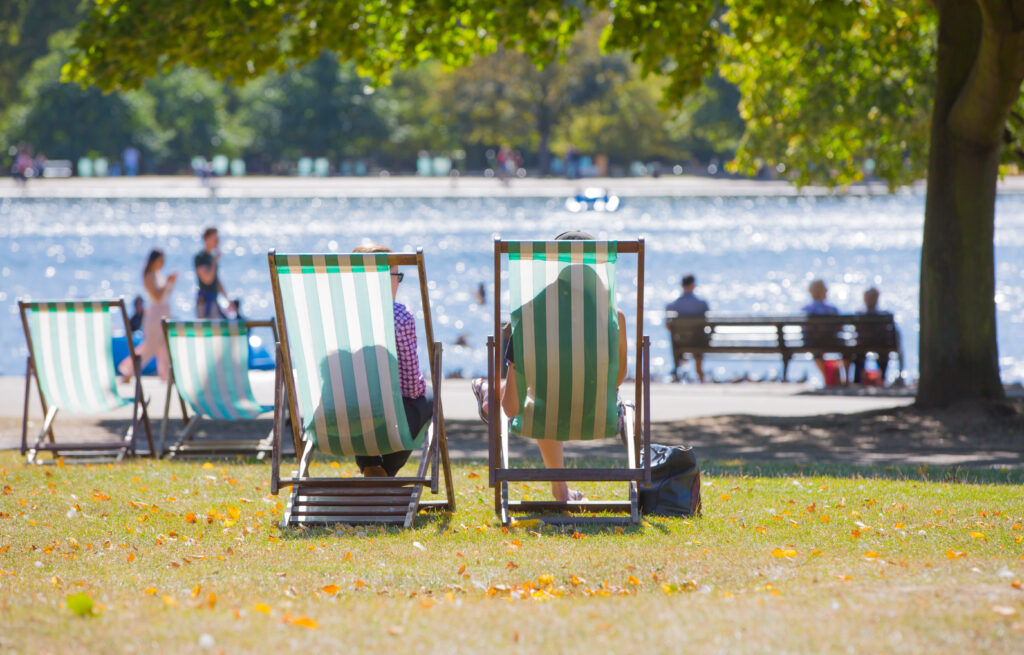
IR Stone / Shutterstock
Popular London Events and Festivals
Music Festivals in London
Every musician, big and small, includes London on their touring schedule. You can be sure there’s plenty of great live music to catch on any given day. And, at certain times throughout the year, you can catch an entire line-up of greats performing in one place.
Tickets to these events can sell out in a flash, so advanced planning is recommended.
Re-Textured: Three days and some very long nights of electronic music and techno taking place at multiple venues across the city. Ticket prices will vary by event. April 2-5, 2020.
All Points East: One of the city’s biggest festivals, this 6-day event takes place over two weekends in Victoria Park and includes acts like Tame Impala, Iggy Pop, Kraftwerk, Johnny Marr of the Smiths, John Maus, Grandmaster Flash, Kim Gordon, and many others. Tickets are £65 and up. May 22 - 31, 2020.
We Are FSTVL: Todd Terry, Armand Van Helden, Carl Cox, and other big names in dance music converge at this 2-day festival in Upminster. Tickets for both days start at £117 or £58.50 for one day. May 23, 24, 2020.
Wide Awake Festival: New for 2020, this one-day festival takes place in Brixton’s Brockwell Park and features indie pop and electronic acts like Drab Majesty, Boy Harsher, and Surfbort. Early Bird tickets can be yours for £32.45. June 5, 2020.
Mighty Hoopla: In Brixton, enjoy a night of LGBTQ+ dance anthems from Jimmy Sommerville of Bronski Beat, Betty Boo, and Natasha Bedingfield, among others. General admission is £50. June 6, 2020.
Lovebox: This year’s line-up includes Tyler the Creator, FKA Twigs, Charli XCX, Hot Chip, Khalid, and other big deal performers, together for three nights at London’s Gunnersbury Park. Tickets are £72.50 per day or £149.50 for all three days. June 12 - 14, 2020.
British Summer Time BST Hyde Park: Two weekends of performances from Kendrick Lamar, Pearl Jam, the Pixies, Taylor Swift, Kesha, and more. Tickets start at £70.60. July 4 - 11, 2020.
Maiden Voyage: Coinciding with a late August Bank Holiday, Maiden Voyage takes place on Three Mills Island and showcases up and coming artists in hip-hop, funk, jazz, house, and afrobeat. Tickets are currently available for £25. August 30, 2020.
BBC Proms in the Park: Every September, BBC presents classical, opera, and pop performances in London’s Hyde Park. Dates and prices have yet to be announced for 2020.
EFG London Jazz Festival: Catch jazz performances from all over the world at this 10-day November festival at venues across London. Line-up and dates for 2020 have yet to be announced.
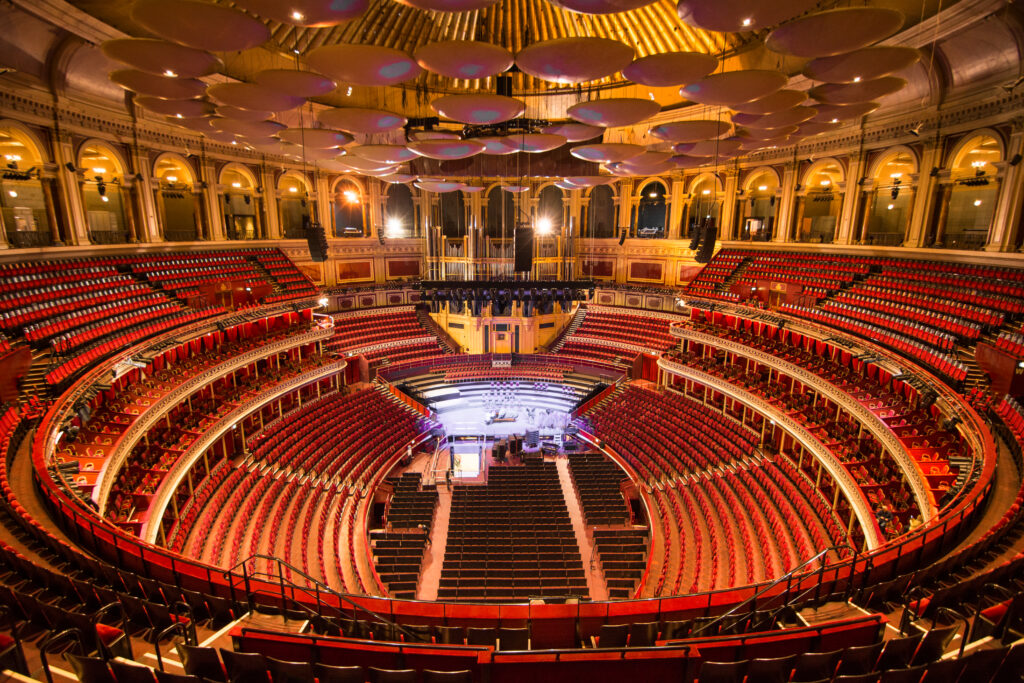
Willy Barton / Shutterstock
Key Events in London Throughout the Year
- New Year’s Day Parade - January 1
- London Art Fair - January 22 - 26, 2020
- Vault Festival - January 28 - March 22, 2020
- London Festival of Architecture - June 1 - 30, 2020
- Hampton Court Palace Garden Festival - July 7 - 12, 2020
- The BBC Proms at the Royal Albert Hall - July 17 - September 12, 2020
- London Open House - September 19 - 20, 2020
- London Film Festival - October 7 - 18, 2020
- Winter Wonderland Hyde Park - November - December 2020
The Best Time to Visit London to Avoid Crowds
Aside from being home to around 9 million people, London is one of the world’s most visited cities. No matter what time of year you visit, you can expect it to feel a little crowded.
If you’d prefer to share London with as few tourists as possible, and you’re not at all picky about the weather, consider going in January, February, or March.
For those who refuse to sightsee in the cold, you may find September and October suitable, when the weather ranges from mild and warm. Lines at attractions will be much more manageable, and expenses like airfare and hotel are fairly reasonable.
Flying into London
The majority of flights into London will arrive at London Heathrow (LHR), the cities largest airport. Other local airports include Gatwick (LGW), Stansted (STN), Luton (LTN), London City (LCY), and Southend (SEN).
Airports are well connected to the city center by rail and by bus. From Heathrow, the journey to Paddington Station takes 15 minutes by rail on the Heathrow Express. Similarly, the Gatwick Express connects passengers to Victoria Station in 30 minutes. From Stansted, the journey to Liverpool Street takes 47 minutes by rail.
How to Get Around London
London is well connected by its Underground rail network and bus service. Renting a car is not recommended unless you’re on your way out of the city. For those not used to driving on the opposite side of the car and road, London’s congested streets are probably not the best place to learn.
A warning to night owls: not all Tube lines run 24-hours a day, though some lines do. If you are out late, you can count on all bus lines to operate all day and night.
Tube fares are determined by how far you travel, when you travel, and method of payment. The city is divided into nine zones, with Central London making up zone 1. Oyster card is the least expensive way to pay for single fares. For example, a single adult zone 1 ride is £4.90, whereas the same trip is £2.40 when paid by Oyster card. You can purchase an Oyster card prior to your trip.
Things to Do in London
London has more world-class attractions than you can probably squeeze into a single visit. You’ll surely want to visit Buckingham Palace, London Bridge, and the Tate. You can also catch a show in London’s West End or enjoy a classic hop-on hop-off sightseeing bus tour.
Shoppers should head to Harrods and Selfridges for fashion, luxury, and beauty products. Other popular shopping areas can be found along Oxford Street, Bond Street, Knightsbridge, and Notting Hill.
London is home to some of the best museums in the world and it would be criminal if you didn’t visit at least a few during your trip. Even if you’re not a fan of the art inside, at the very least the Tate Modern is an impressive feat of architecture. And of the 2,300 paintings housed at London’s National Gallery, you’re statistically bound to find at least a few of them appealing.
Have limited time to spend? Here’s what to do with three days in London.
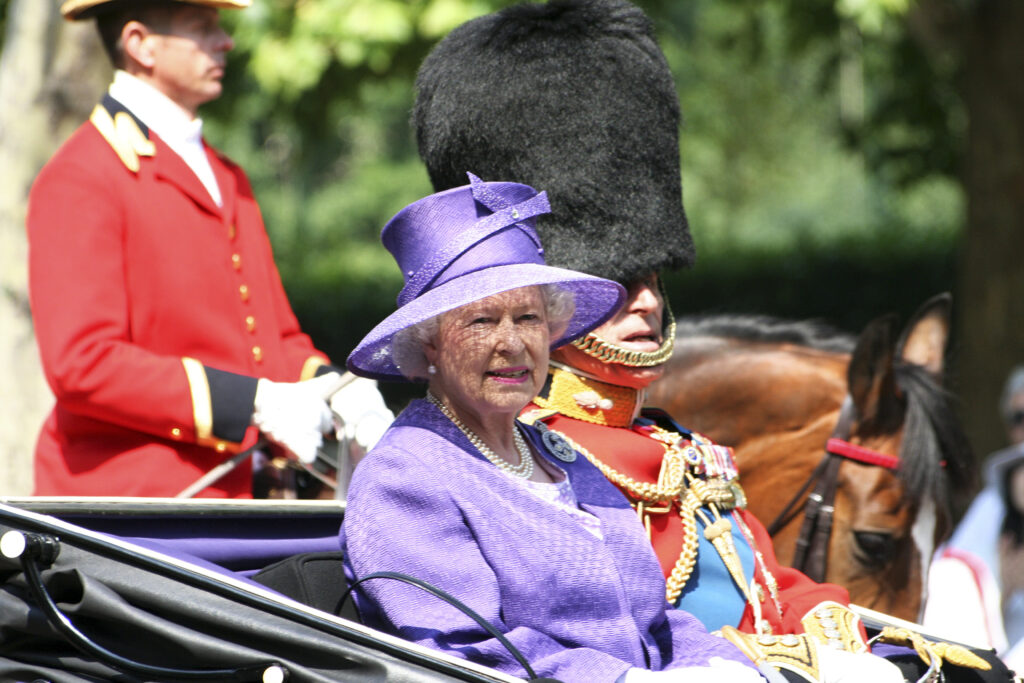
Bikeworldtravel / Shutterstock
London FAQs
Is London safe for tourists?
Be mindful of your surroundings, especially in crowded areas like train stations or while riding the Tube, as pickpocketing can occur in London as it does in any major city around the world. Consider moving wallets and phones to your front pockets where they're more difficult for pickpockets to grab. Make sure shoulder bags and purses are closed shut and worn across the body.
Is London dangerous at night?
For the most part, London is a safe city to walk around at night. Just as you would in other major cities, take caution when walking empty streets or areas that are dimly lit.
What month is the most expensive time to travel to London?
July is the most popular month to visit London, and, as such, the most expensive. June and August can also be quite pricey. The summer tourist swell pushes up prices on both hotels and flights when there are fewer of both available. As far as warm weather months go, May, early June, and late August are the most reasonable.
When is the cheapest time to fly to London?
A cheap fare can pop up with zero notice and at any time of year, though transatlantic deals tend to be pretty rare for peak summer. Typically, you'll find the lowest fares for travel between Thanksgiving and Christmas, and again after the holidays in January, February, and early March. Fares also tend to drop after the summer months in mid to late September.
Here's a look at current deals to London Heathrow from all over the U.S. and Canada.
Stay on top of breaking sales, fare drops, and more! Follow us on Twitter at @Airfarewatchdog. And make sure to sign up for FREE airfare alerts to be notified when prices drop.
